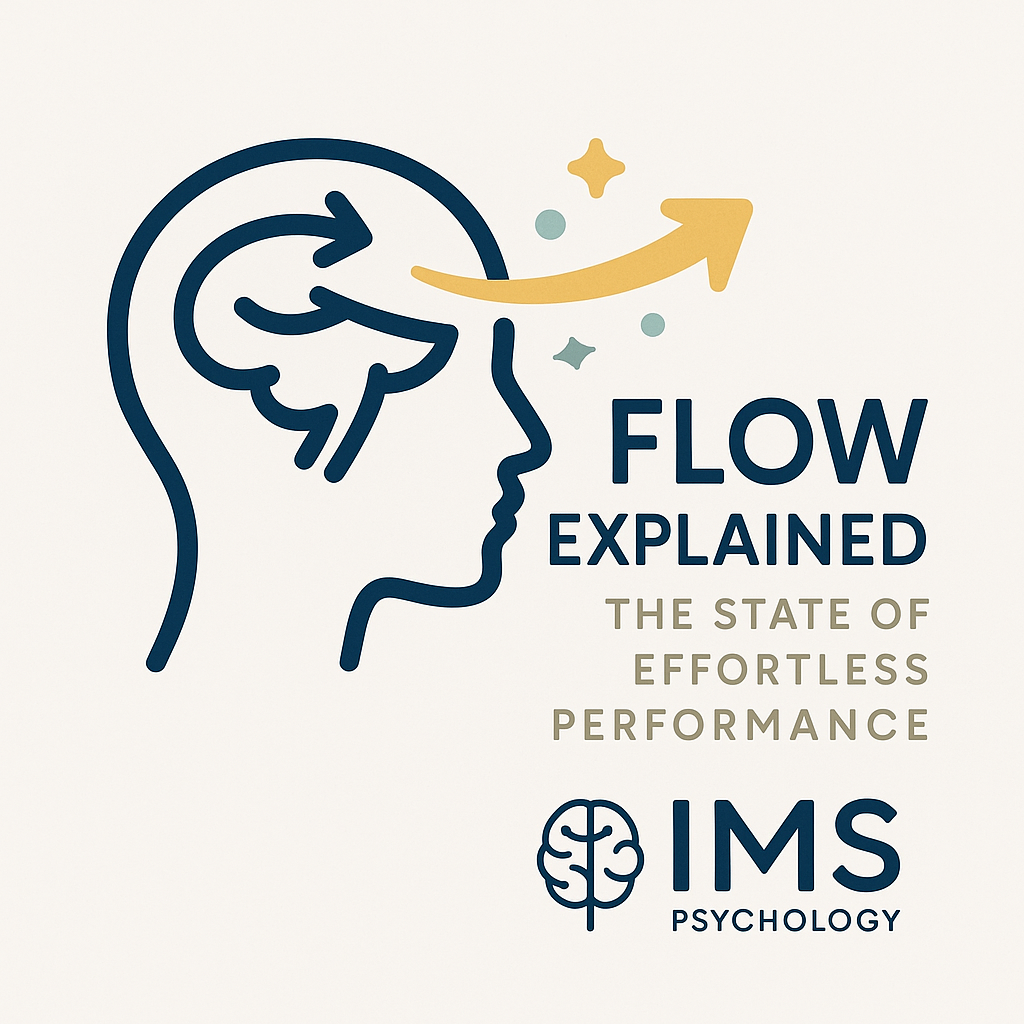
Flow Explained: The State of Effortless Performance
Share
Flow Explained: The State of Effortless Performance
Discover the psychology of flow — the state of deep focus and effortless performance. Learn how to access flow and why it boosts happiness and productivity.
Introduction: When Time Disappears and Focus Takes Over
Have you ever been so absorbed in a task that you lost track of time? You weren’t distracted. You weren’t thinking about the outcome. You were just fully in it.
This is the essence of flow, a term coined by psychologist Mihaly Csikszentmihalyi, describing the mental state where we’re deeply immersed in an activity — feeling energized, focused, and fully engaged.
Flow isn’t just about peak productivity. It’s a powerful well-being enhancer, linked to greater happiness, creativity, and life satisfaction.
What Is Flow?
Flow is a psychological state of complete immersion in a task that is both challenging and rewarding. During flow:
-
Attention is fully focused.
-
The sense of self fades.
-
Time feels distorted (it speeds up or slows down).
-
Effort feels natural — not forced.
-
The activity becomes its own reward.
This isn’t just a feel-good state — it’s a scientifically studied form of optimal experience.
The Psychology Behind Flow
Csikszentmihalyi’s Flow Theory
Flow emerges when three conditions are met:
-
A clear goal
-
Immediate feedback
-
A balance between challenge and skill
When the task is too easy, boredom sets in.
When it’s too hard, anxiety arises.
Flow lives in the sweet spot — where your abilities match the challenge, stretching you just enough to grow without breaking.
Neuroscience of Flow
-
Flow activates the prefrontal cortex in a unique way — temporarily down-regulating self-monitoring and inner criticism.
-
Brain waves shift toward alpha and theta states, associated with creativity and calm focus.
-
Dopamine surges during flow, enhancing motivation, learning, and positive emotion.
When Do We Experience Flow?
Flow can happen during:
-
Creative tasks (writing, painting, designing)
-
Physical activity (dancing, surfing, rock climbing)
-
Work (coding, teaching, crafting presentations)
-
Hobbies and play (gardening, chess, gaming)
It’s not about the activity itself, but how you relate to it. Even mundane tasks can induce flow when approached with intention and skill.
Benefits of Flow
✅ Emotional Well-Being
Flow increases moment-to-moment happiness and long-term life satisfaction.
✅ Focus & Productivity
Deep work in flow is more efficient, precise, and fulfilling.
✅ Skill Development
Repeated flow states push you toward mastery.
✅ Reduced Anxiety & Rumination
Flow silences the inner critic, offering mental clarity and relief.
Flow vs. Burnout: The Energy Difference
Flow is energizing, not exhausting.
Burnout arises when tasks are mismatched to your values, overloaded, or chronically stressful.
Flow, in contrast, requires effort — but in a way that feels motivated from within, not pressured from outside.
How to Cultivate More Flow
1. Choose Tasks with Clear Goals
Define what success looks like before starting. Ambiguity blocks immersion.
2. Match Challenge with Skill
Increase difficulty as your competence grows to stay in the flow zone.
3. Eliminate Distractions
Turn off notifications. Block time. Create a space that supports focus.
4. Create Rituals for Entry
Some people light a candle, play a certain playlist, or follow a brief breath routine to cue flow.
5. Track When & Where Flow Happens
Notice patterns: time of day, environment, or task type. Build your schedule around your natural flow windows.
Barriers to Flow
-
Multitasking: Flow demands full attention.
-
Perfectionism: Over-monitoring blocks ease and spontaneity.
-
Lack of skill-challenge alignment: Too hard → anxiety. Too easy → boredom.
-
Frequent interruptions: It takes an average of 15–20 minutes to re-enter a flow state after distraction.
Conclusion: Flow as a Gateway to Fulfillment
Flow is more than a productivity hack — it’s a gateway to deeper engagement with life. Whether you’re working, creating, learning, or simply doing something you love, entering flow can transform effort into joy and discipline into devotion.
If you’d like to build a lifestyle that supports deep focus and fulfillment, explore our Flow & Fulfillment Workbooks at IMS Psychology. Explore science-backed strategies, tracking templates, and guided tools to help you find your unique flow rhythm.
written by,
Martin Rekowski (29.09.2025)
-
External link suggestion: Positive Psychology – What Is Flow?
- https://positivepsychology.com/what-is-flow/